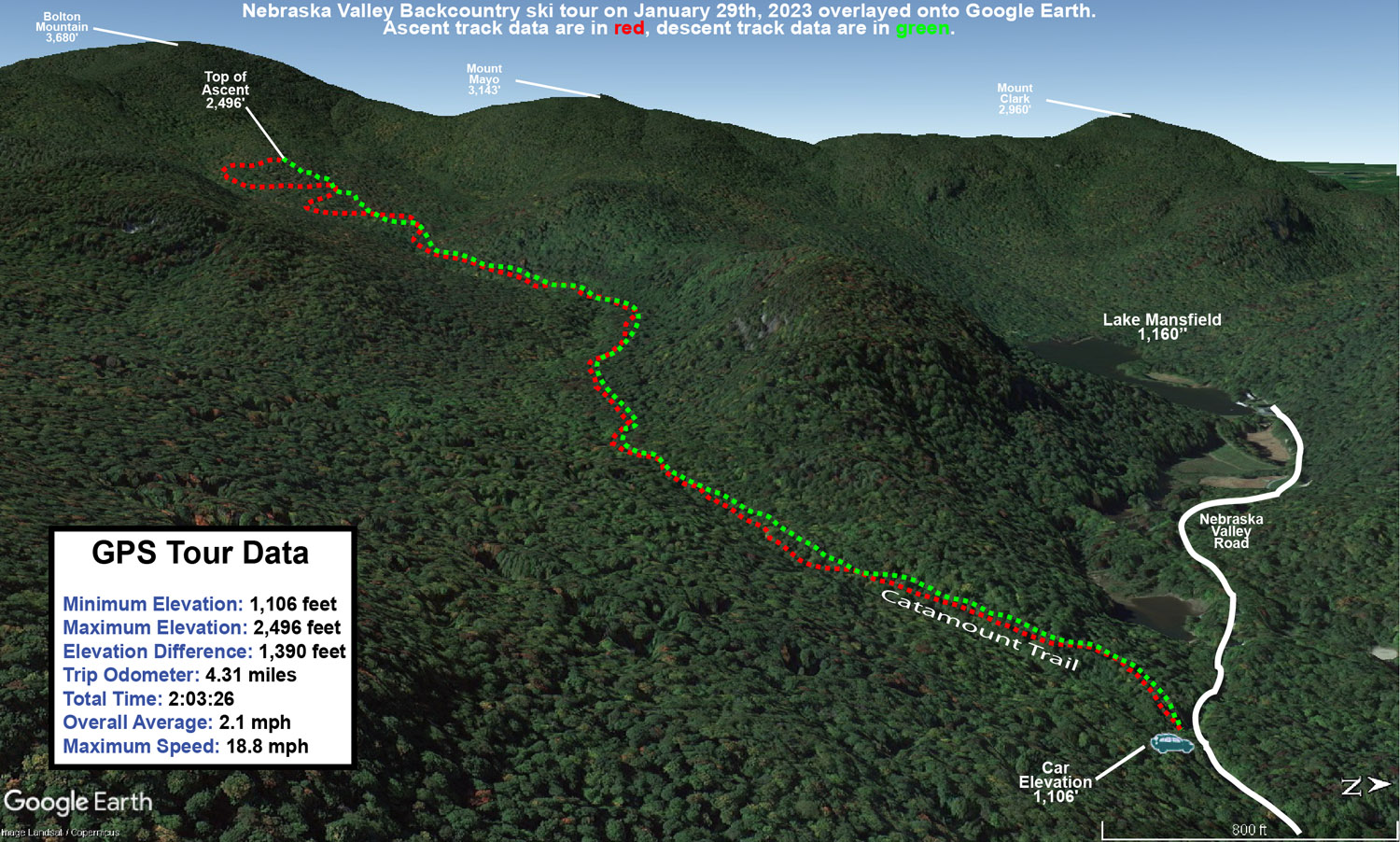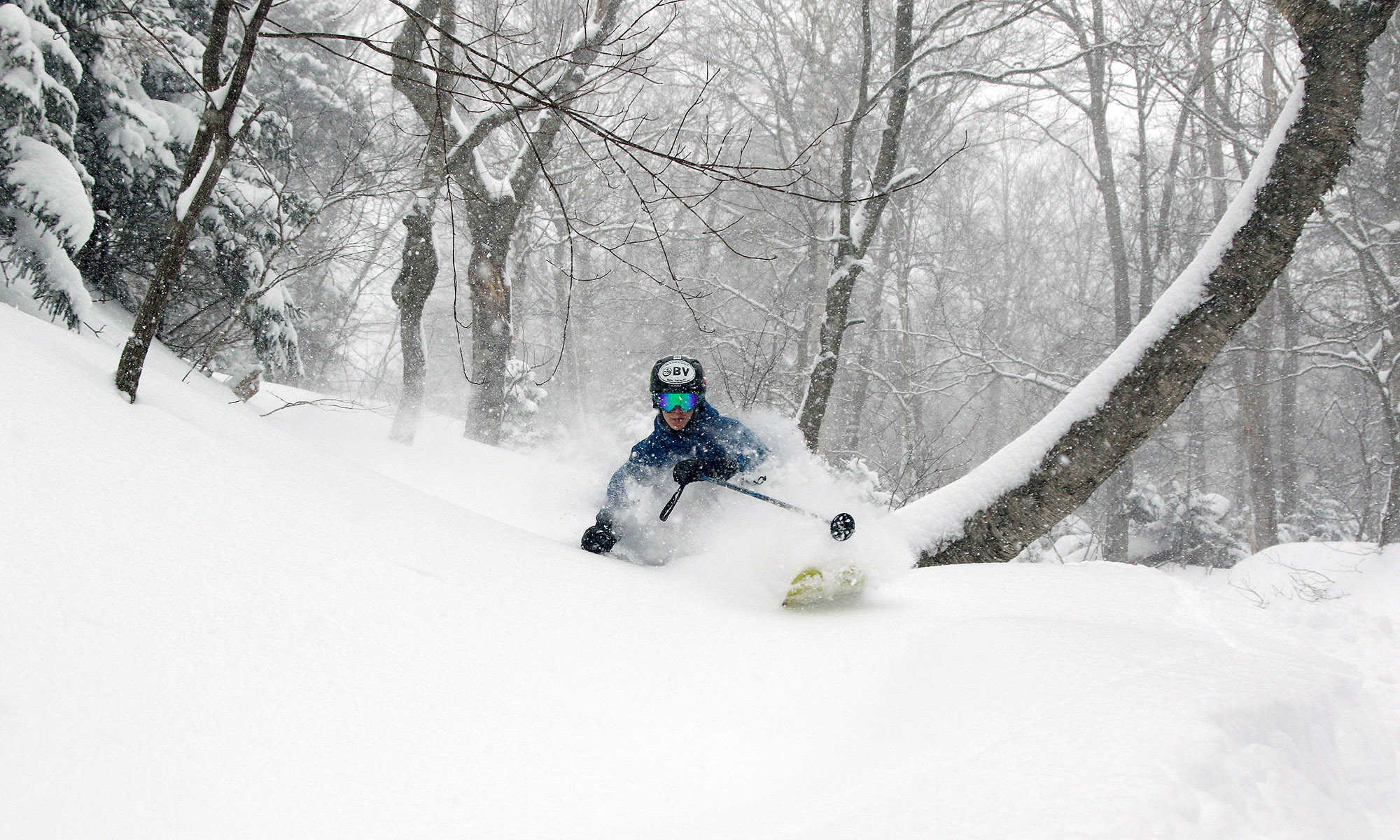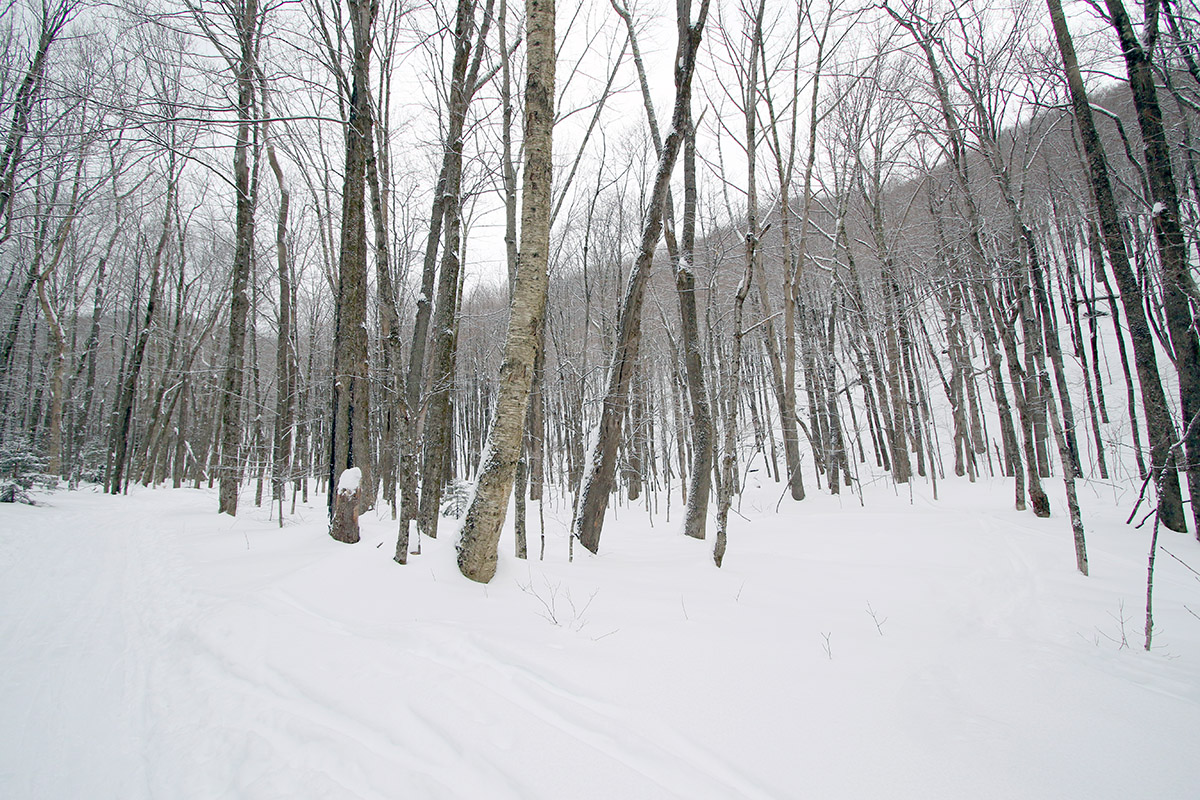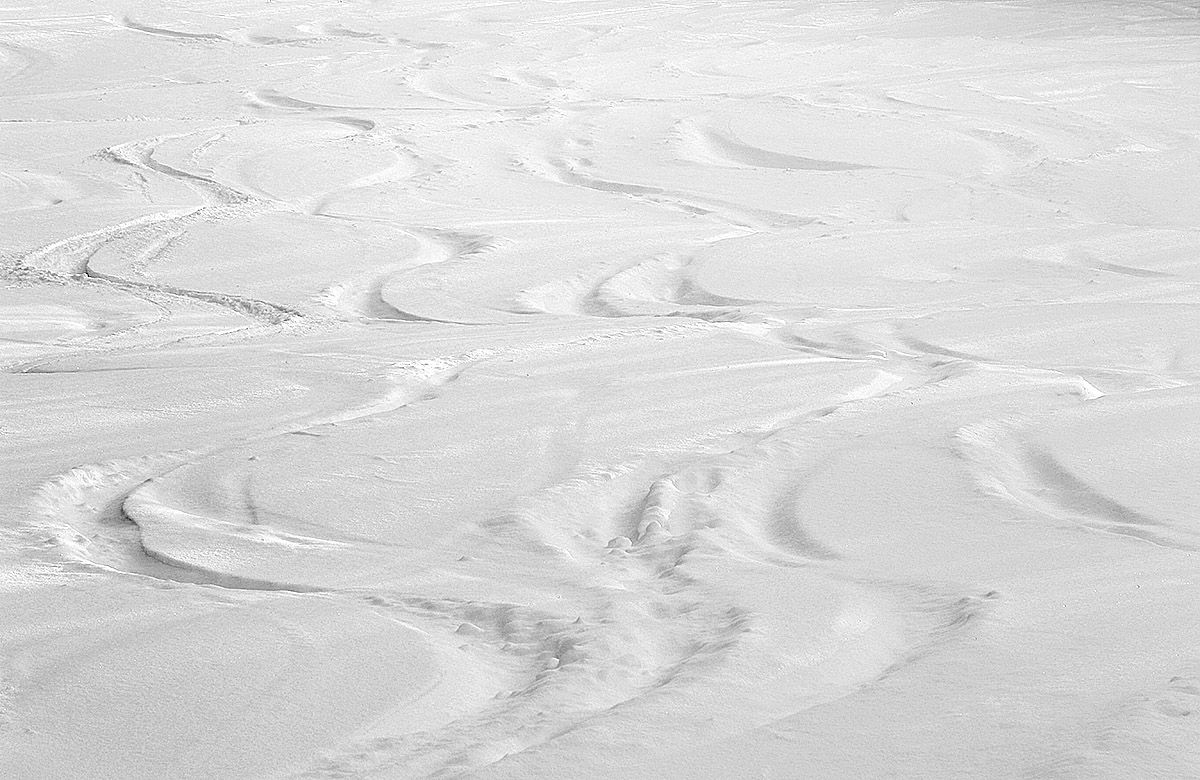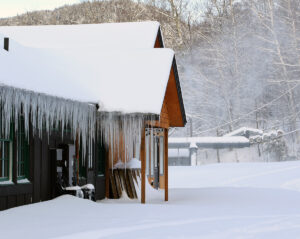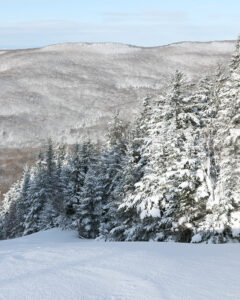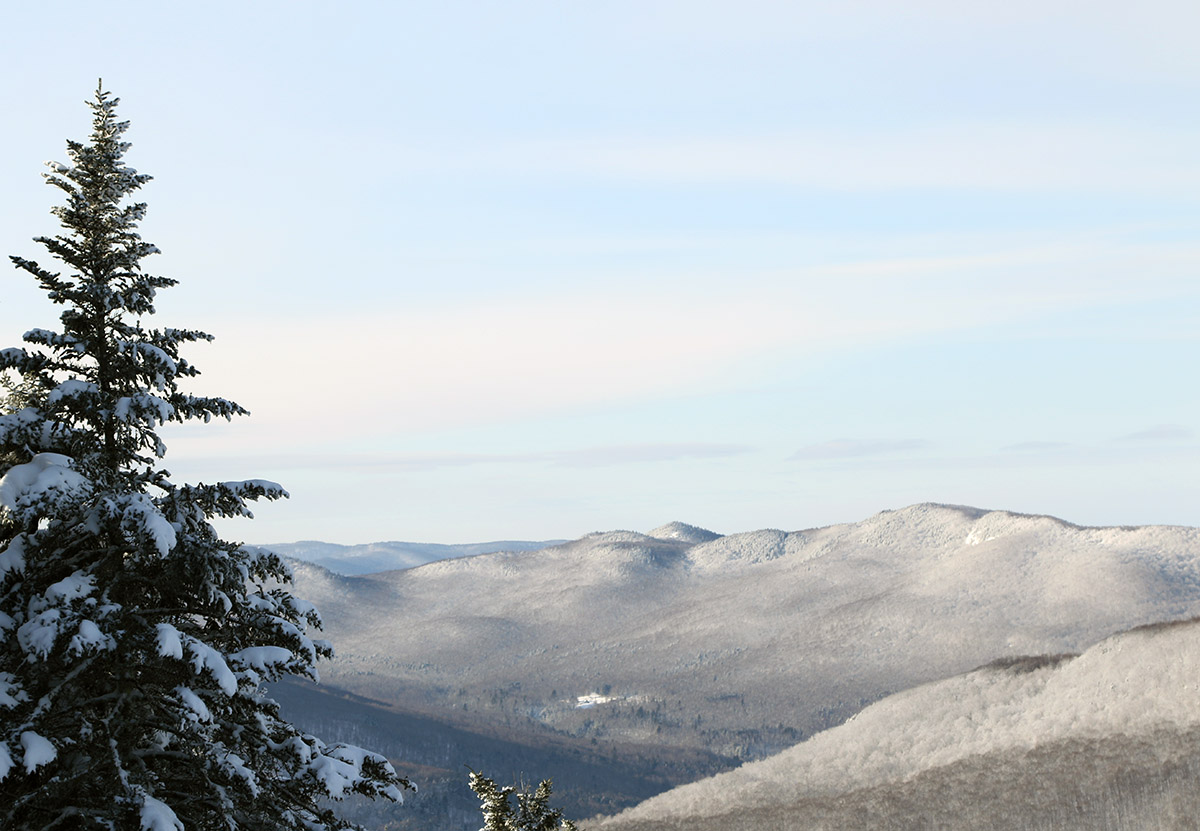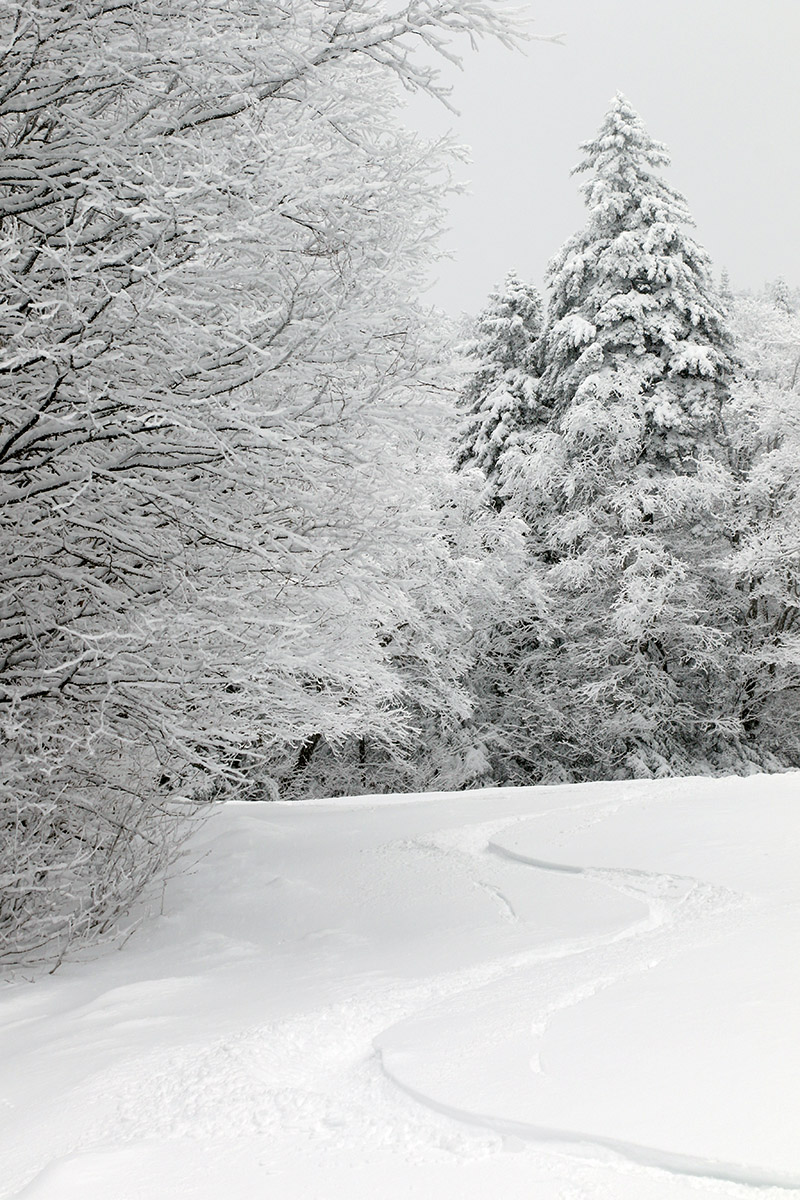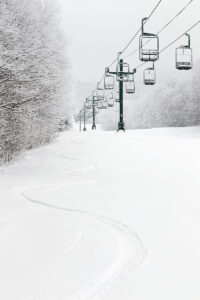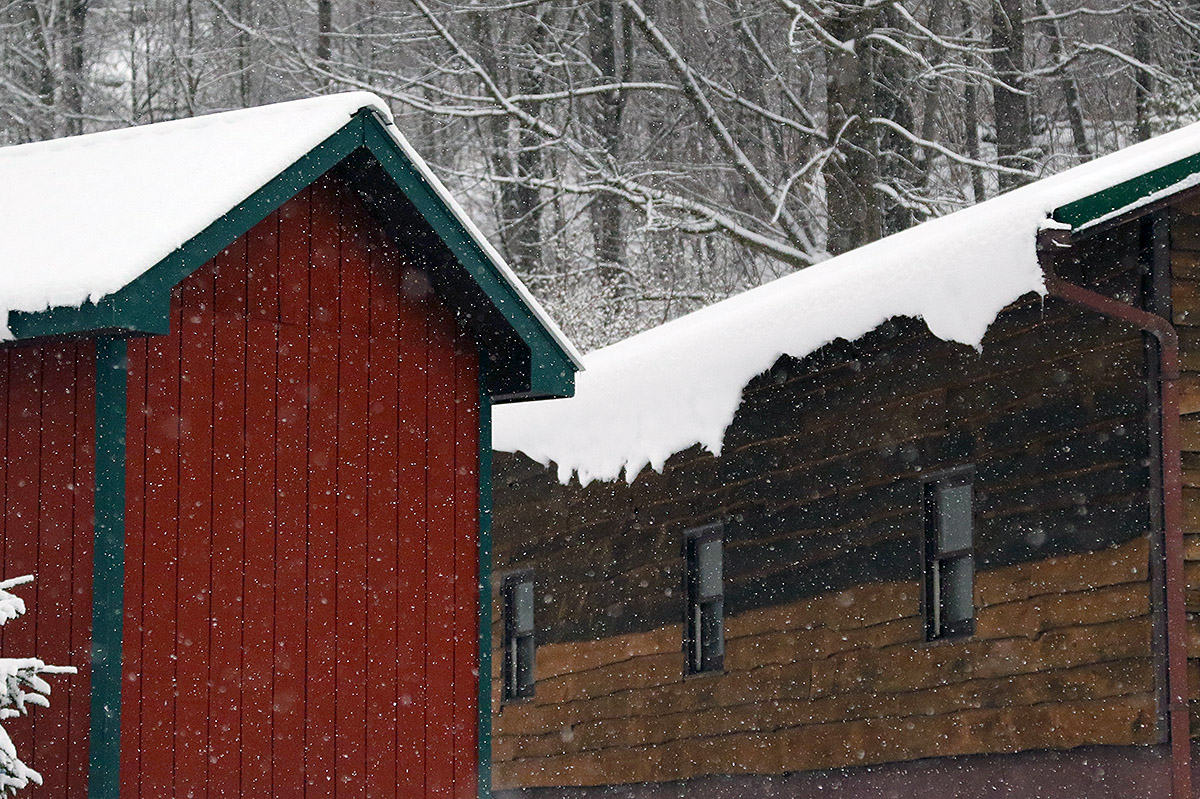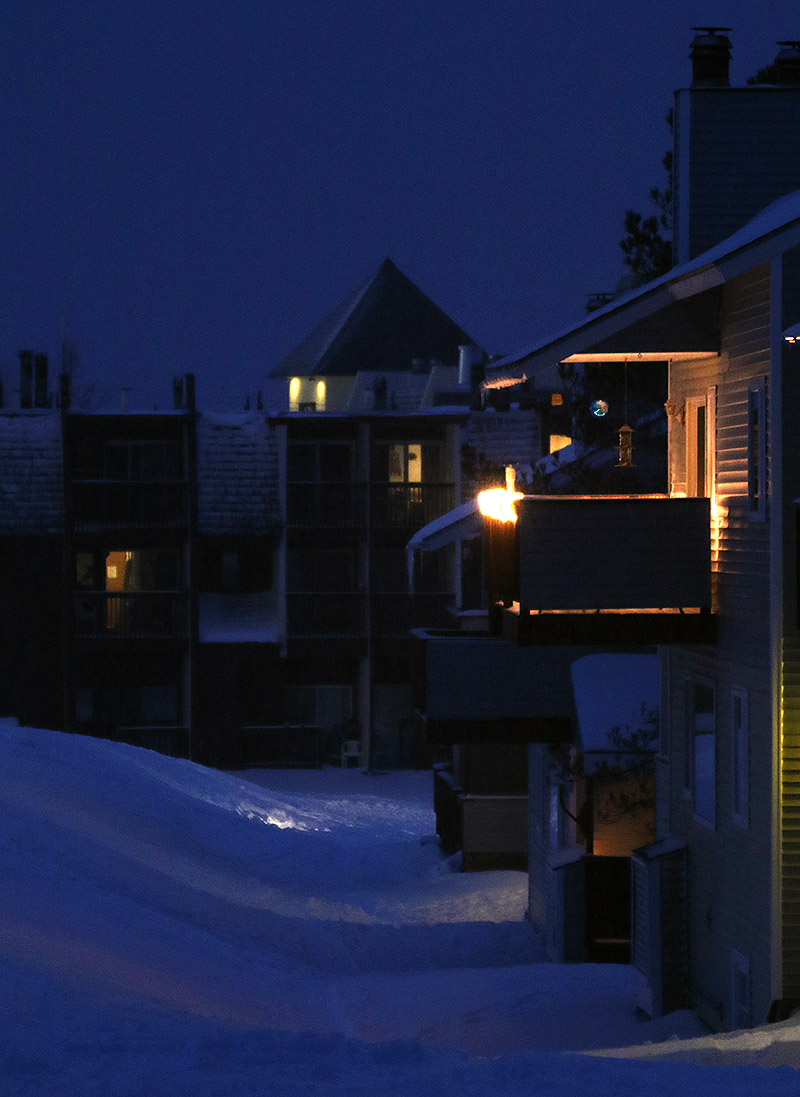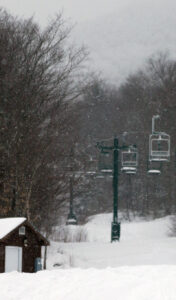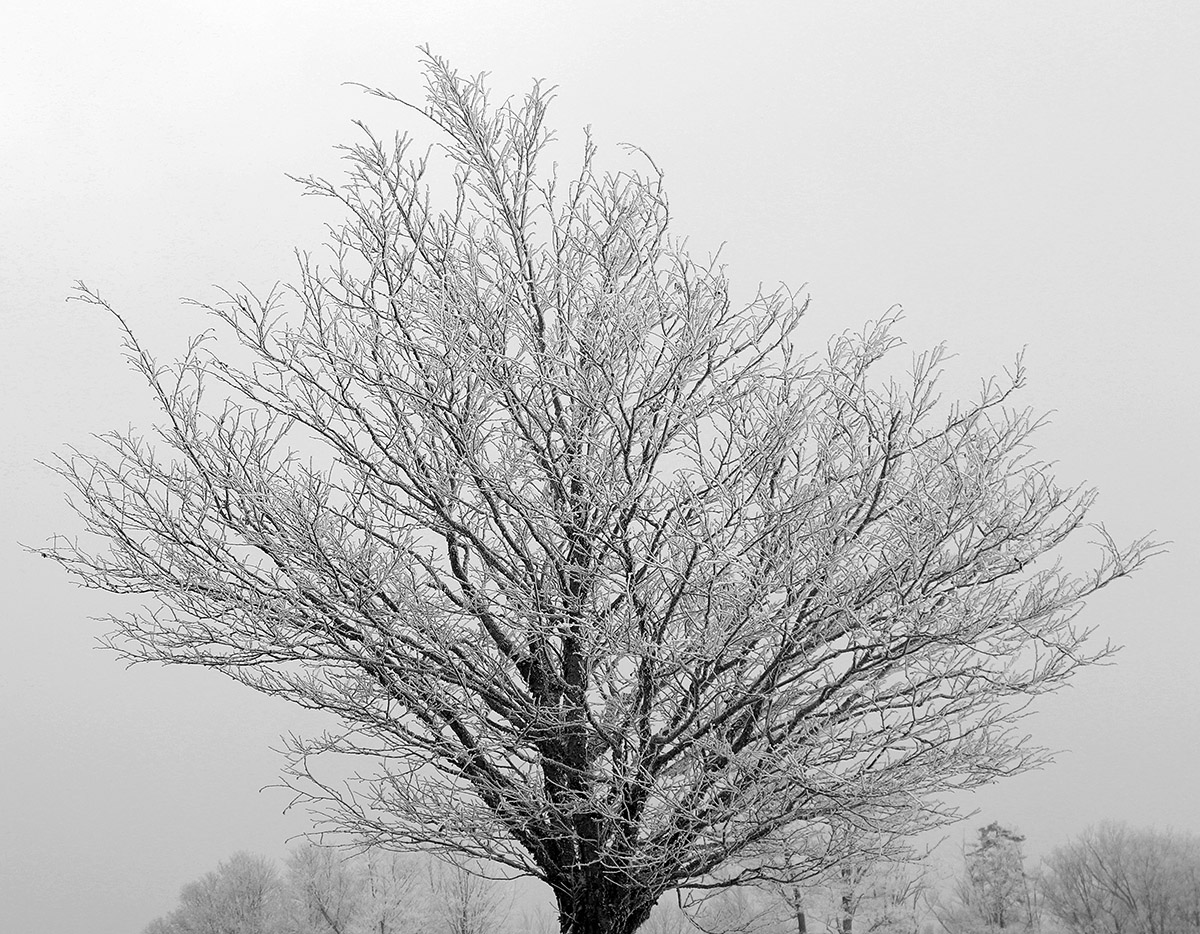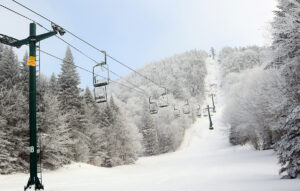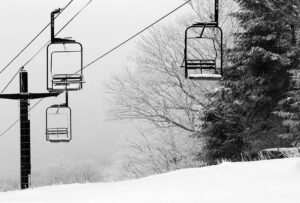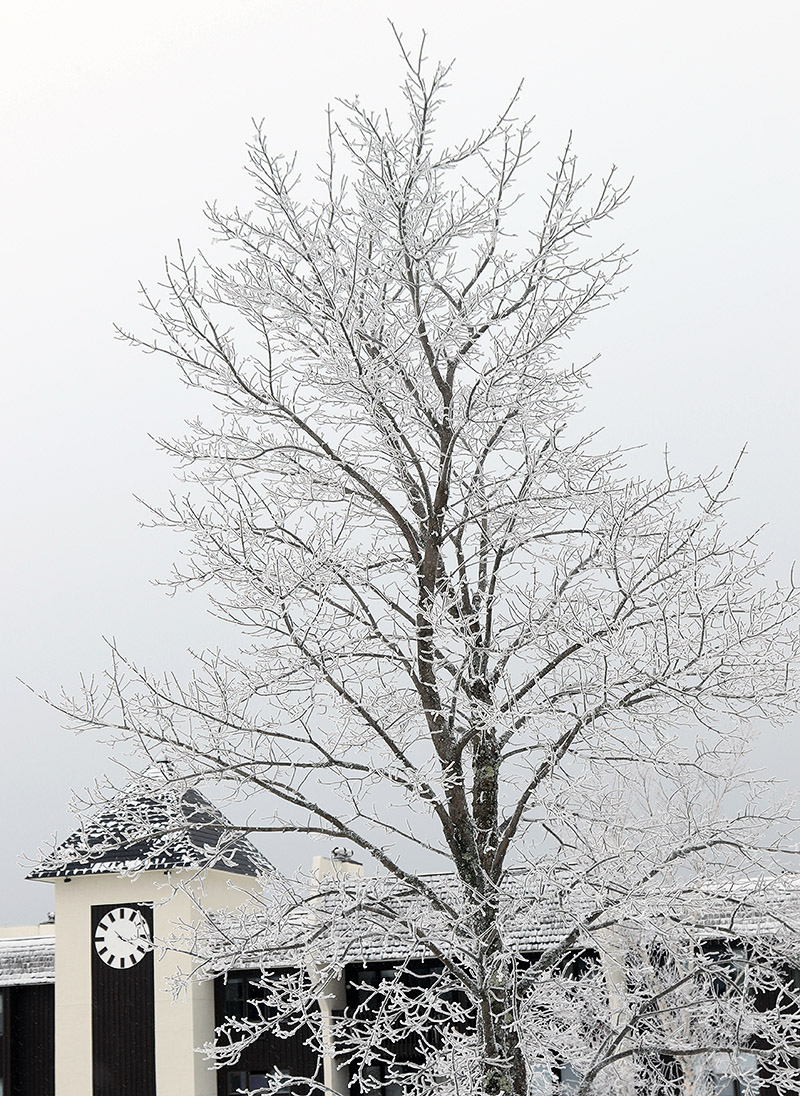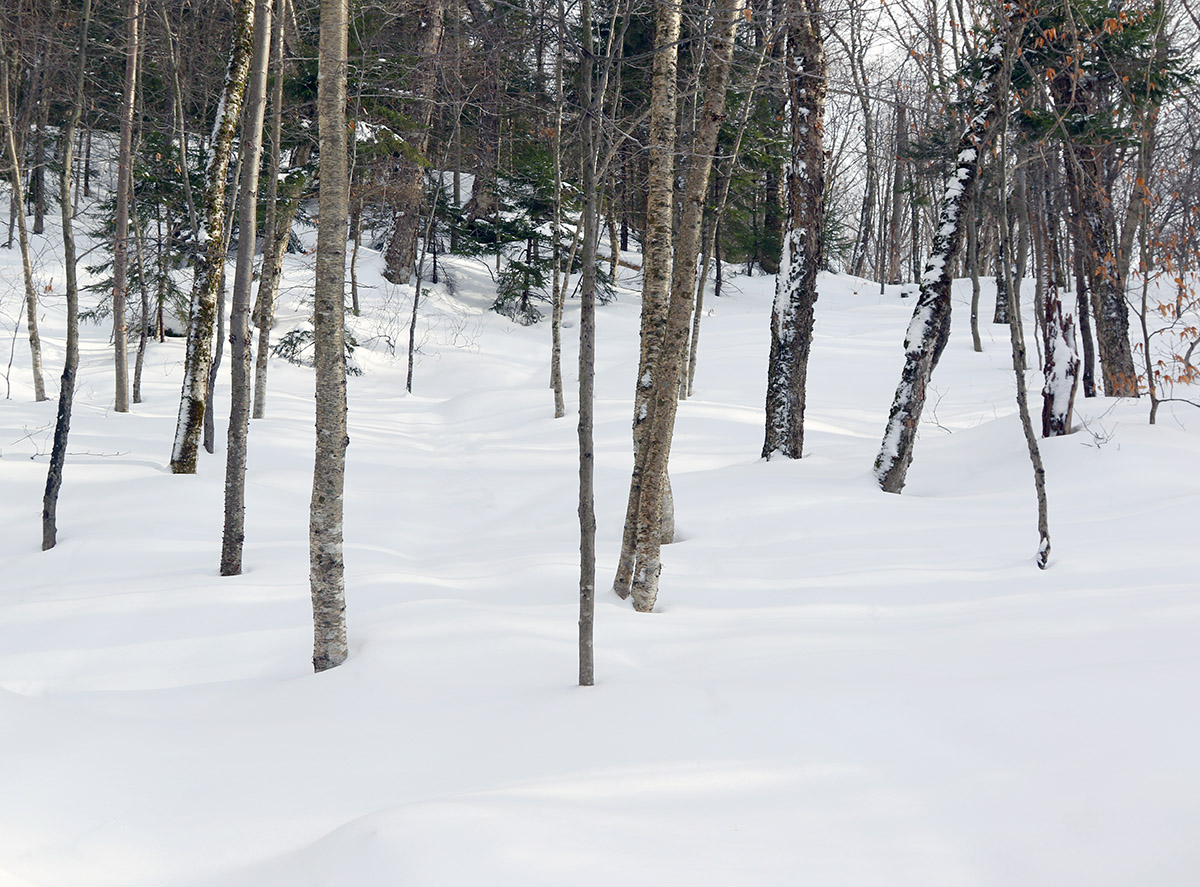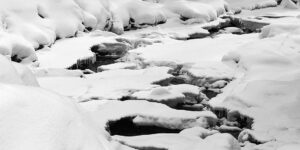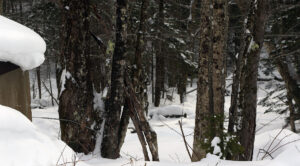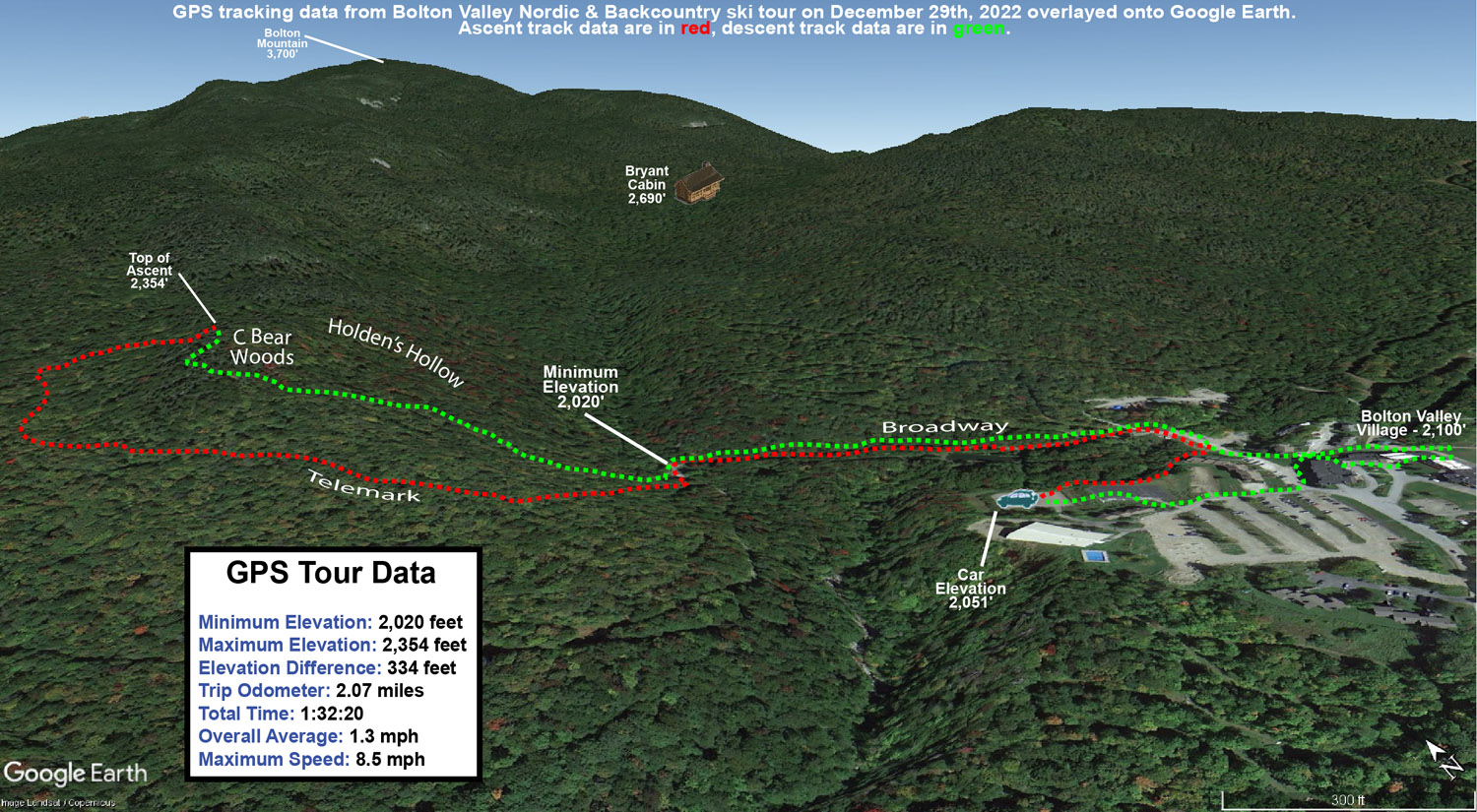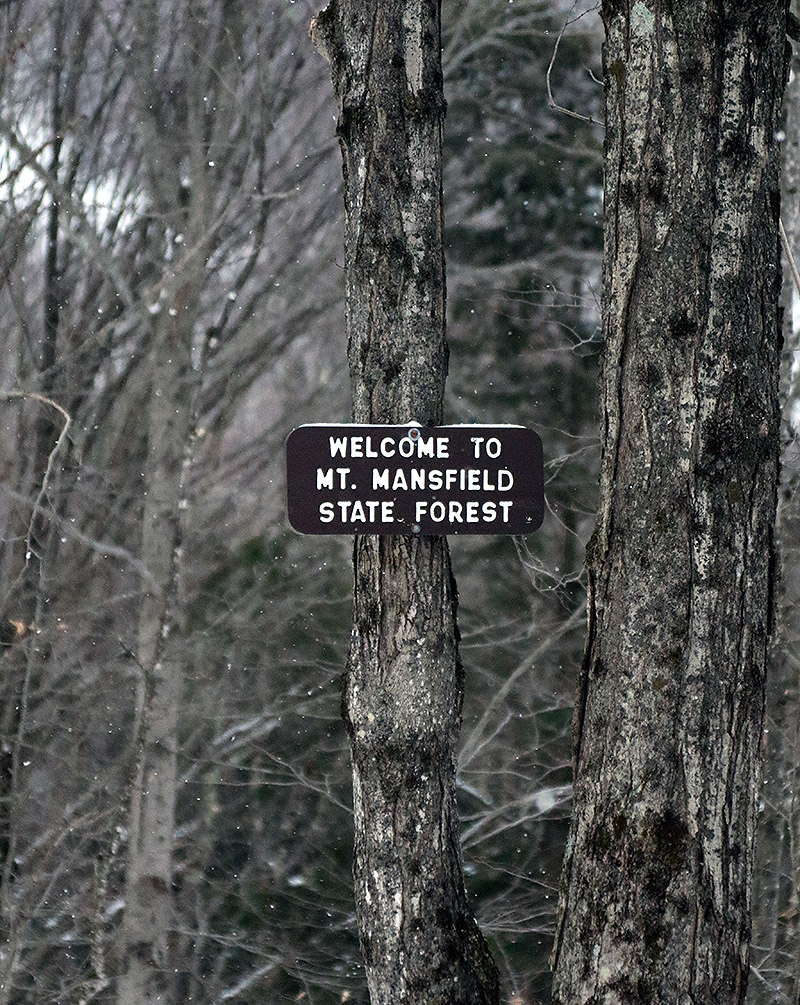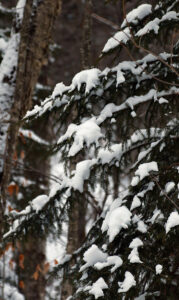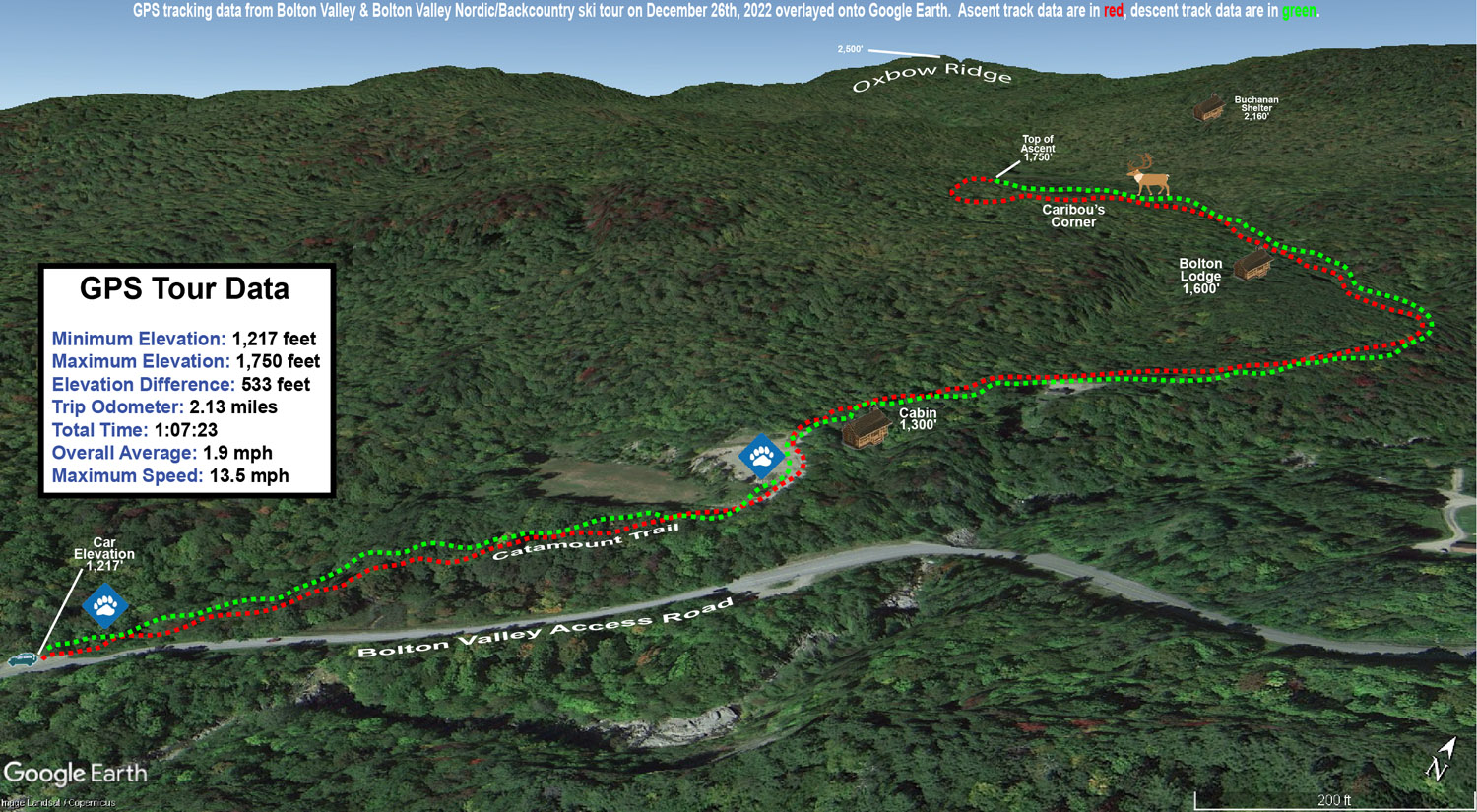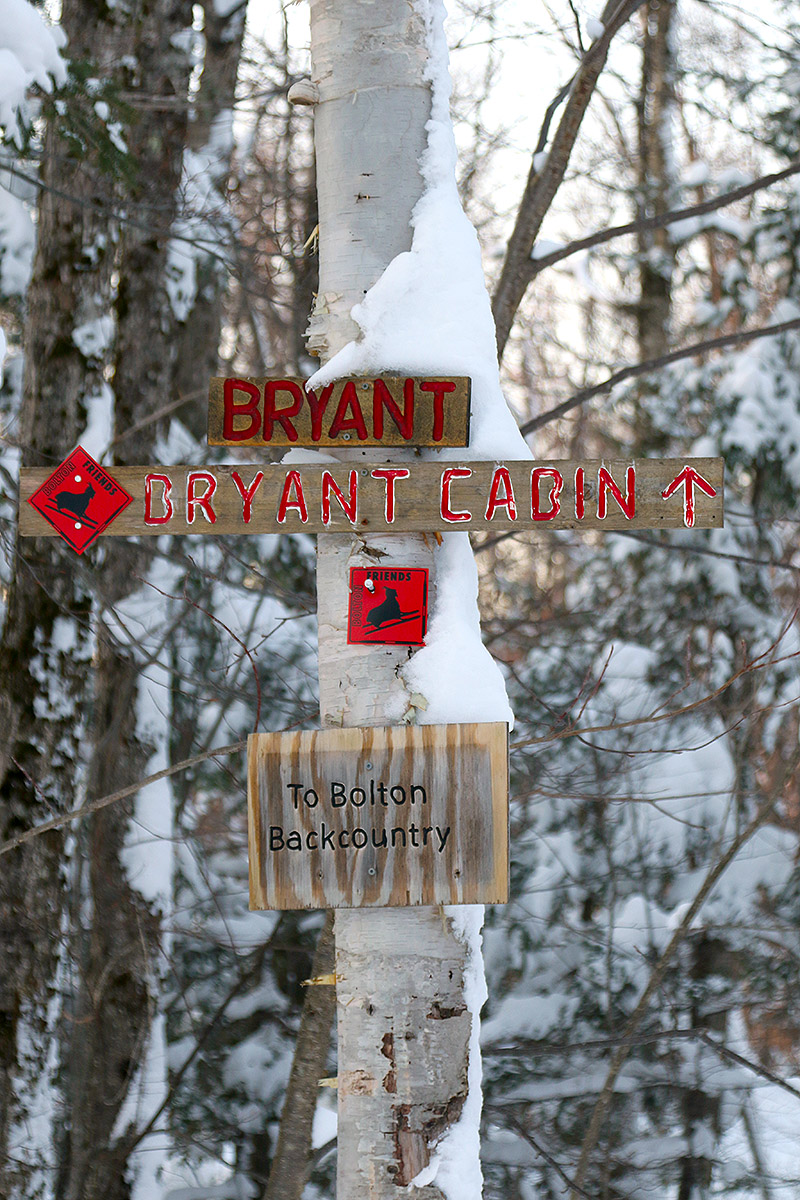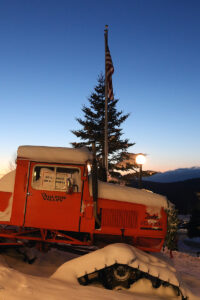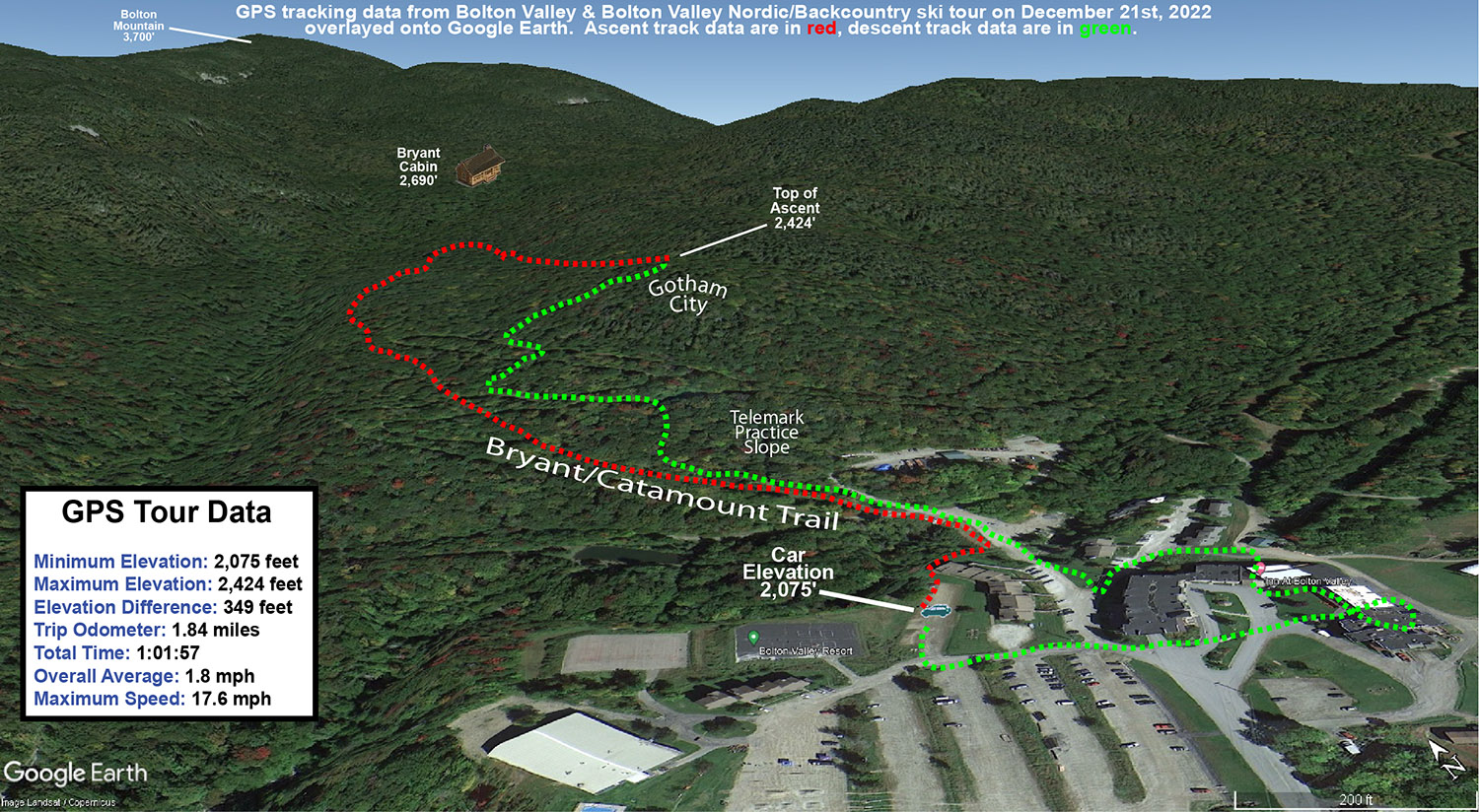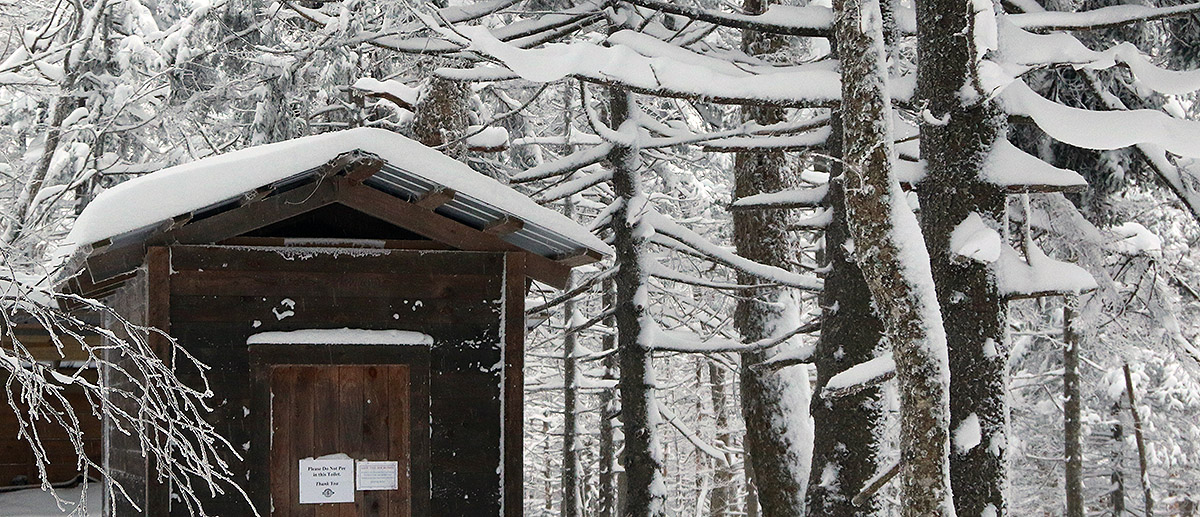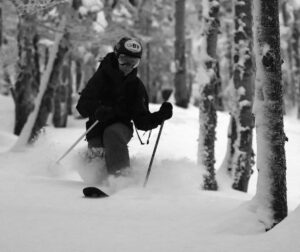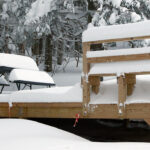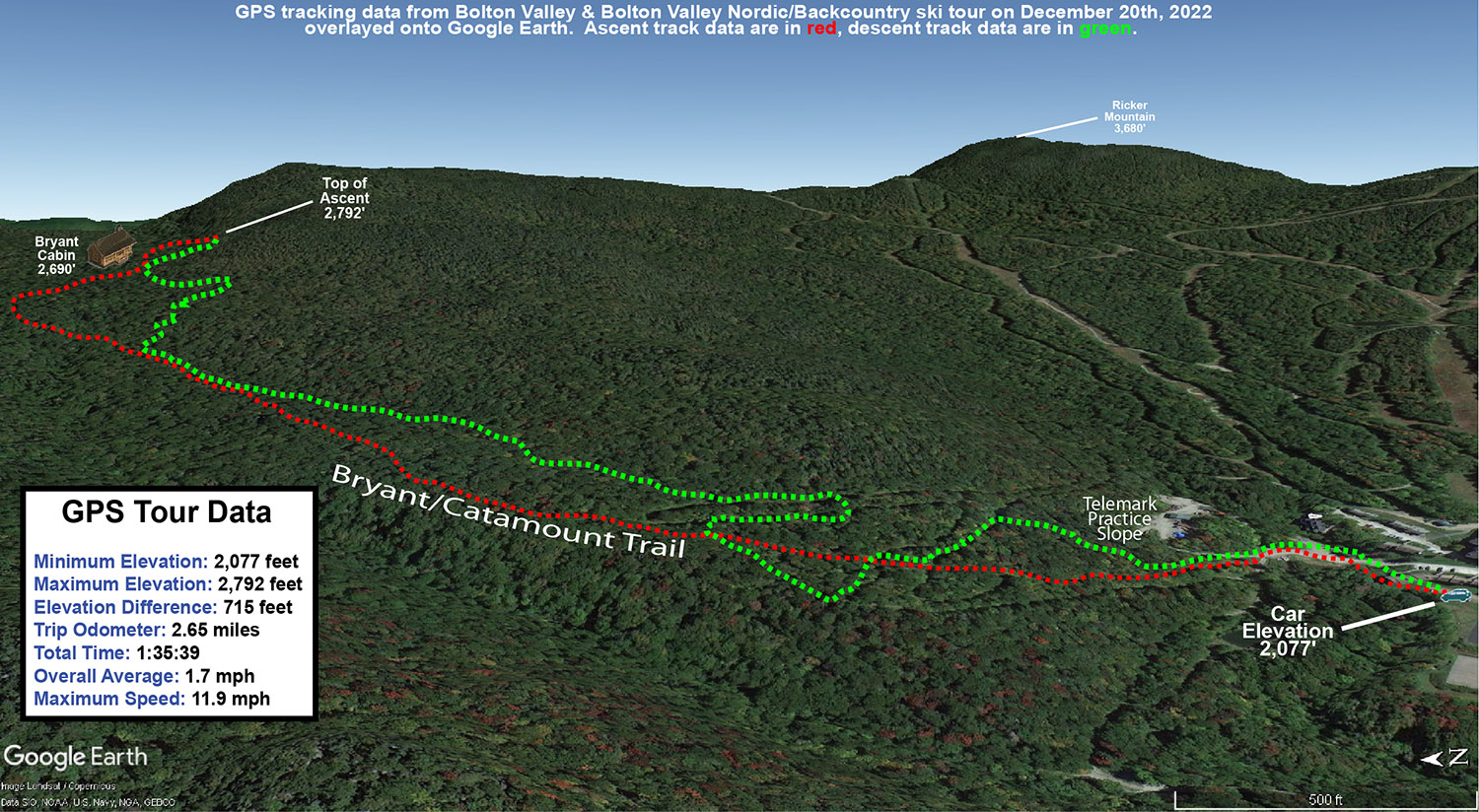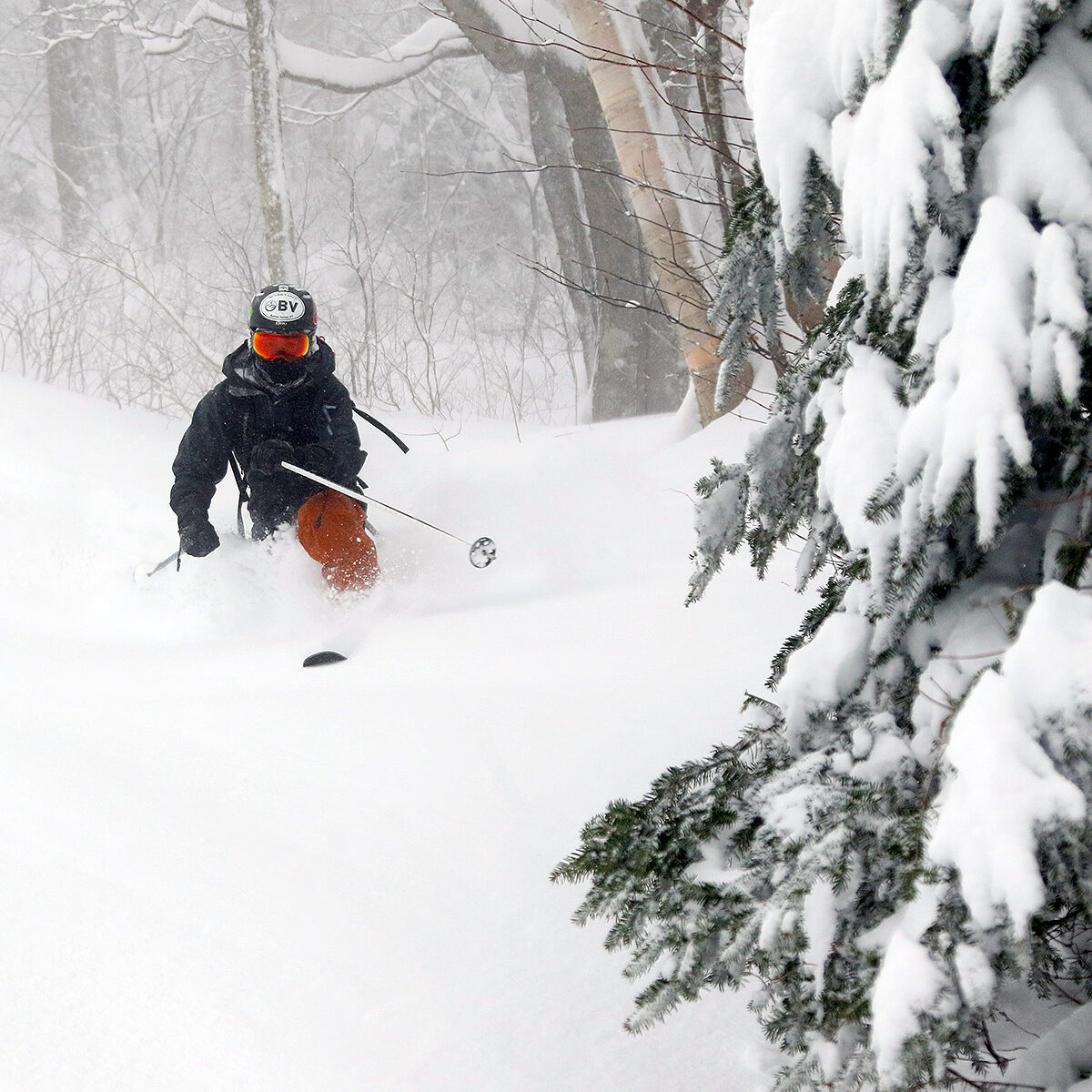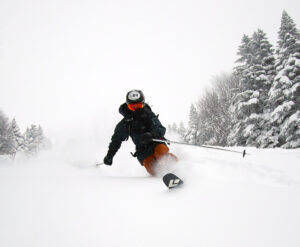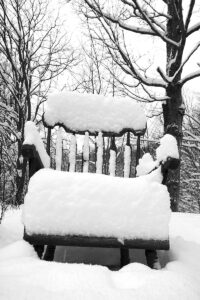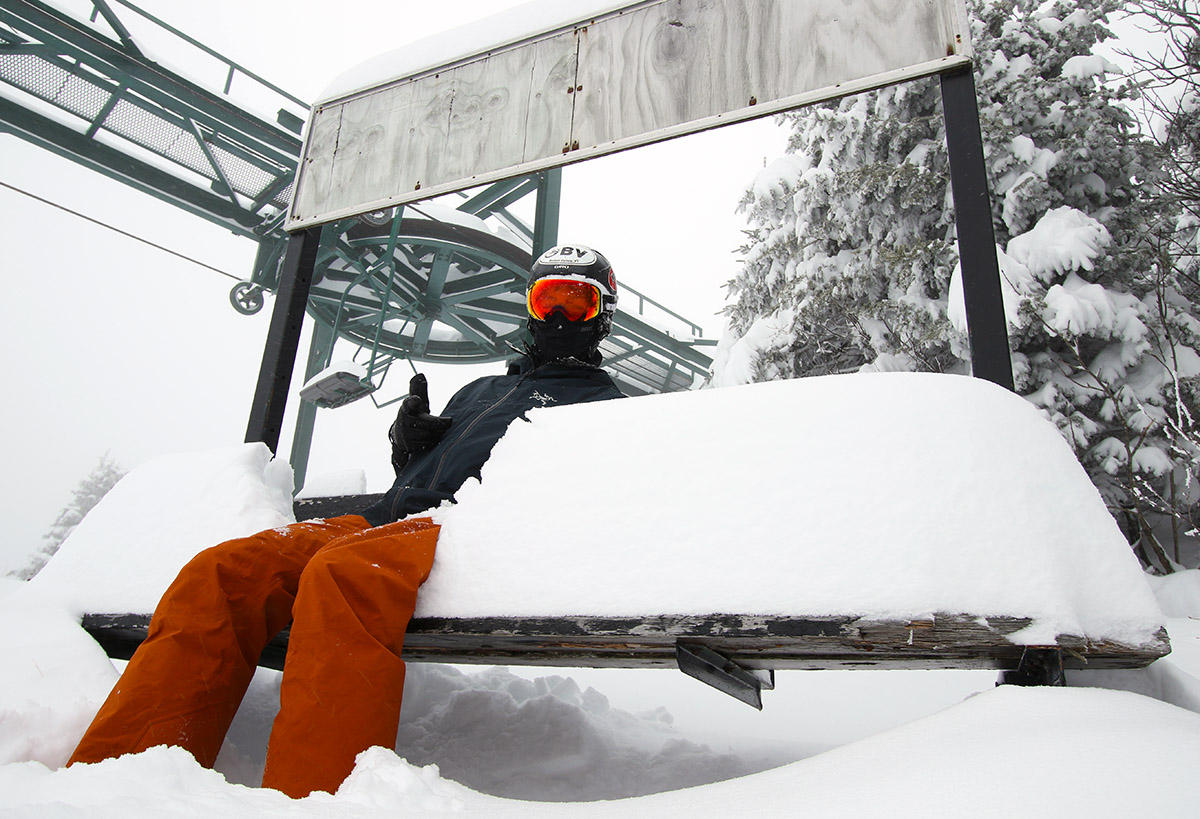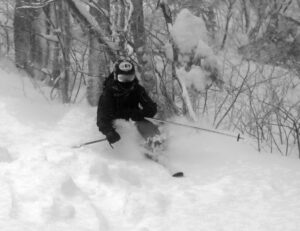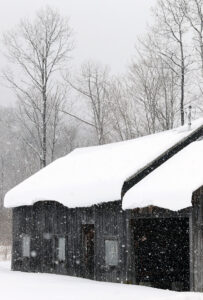
With the strong snowpack in the area now, I decided to head out to the Nebraska Valley for some ski touring today. The last time I toured in the Nebraska Valley I was on the valley’s north side, but I’ve now heard from multiple students of mine that the south side of the valley offers some great skiing off the Catamount Trail. I didn’t have too much information beyond the fact that you can just use the Catamount Trail as a collector for the ski terrain in the area, but it sounded pretty straightforward, fun, and convenient.
I was able to park right at the Catamount Trail parking area on the south side of Nebraska Valley Road, so the trail access was very easy. It had started snowing around midday, and there was steady snowfall through much of my tour in the afternoon. Following the Catamount Trail southward, the options for great backcountry skiing are indeed very obvious. From the trailhead at an elevation of ~1,000’, the trail rises at a moderate grade for about 400 feet of vertical over the course of perhaps ¾ of a mile, and then the terrain flattens out into a relatively broad valley with the main drainage on your left, and steep slopes rising up to your right. The slopes consist of very open hardwood forest throughout, with tree spacing in many areas as much as 20 or 30 feet. I couldn’t see all the way to the top of the terrain, but there must be hundreds of acres there with very obvious ski lines, and the fact that there were tracks coming down out of this terrain suggested that it held good potential. At around a mile from the trailhead I came to the first obvious skin track that headed up off the Catamount Trail into these slopes, so using that was a clear option for some great runs.
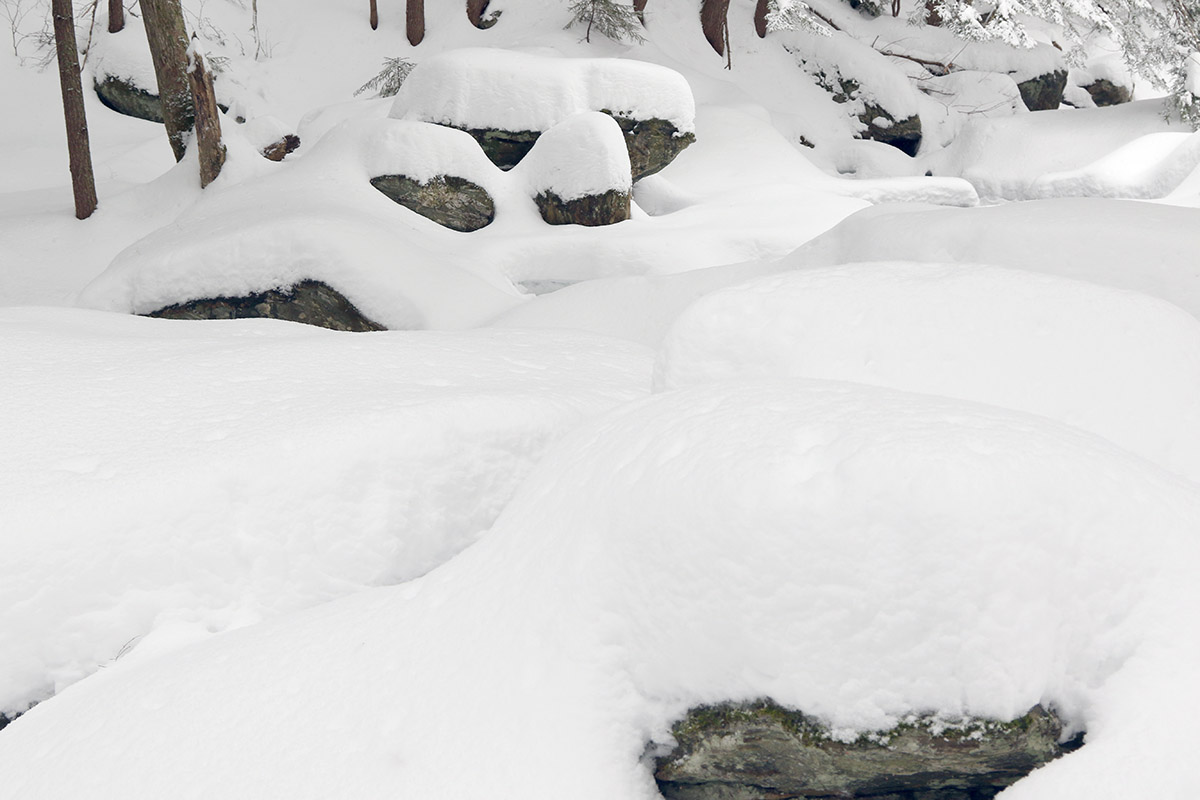
I just happened to run into one of my students descending on the Catamount Trail as he and his group were finishing up their session for the day, and he said that if I had the time, I should head higher up because the snow was better. Being my first time in the area, I did want to take a long enough tour to get the lay of the land, so I continued another mile or so and toured up to around 2,500’. The snow was indeed even better higher up, but the tree lines weren’t as open as the beautiful looking terrain I’d seen lower down. That higher elevation terrain was plenty steep, and certainly offered decent skiing, but I’d say those initial slopes rising from the valley at around 1,500’ are the best bang for your buck as long as the snowpack and snow quality are good at those elevations.
It was snowing quite hard up at 2,500’ when I began my descent, hard enough that I would have been worried about being out there in such weather if I didn’t know the forecast wasn’t calling for sustained accumulations. The snow had added another couple of inches to top off the snowpack, which certainly helped make the powder even a bit fresher. Temperatures had been cold much of the afternoon, but on my descent I quickly realized that the freezing level had risen. I descended out of the heavy snowfall down into mixed precipitation by ~1,500’, and just sprinklings of rain down at the trailhead elevations of ~1,000’. I was glad that I’d finished my tour by that point because the lower elevation snow was definitely getting sticky and more difficult to ski.
